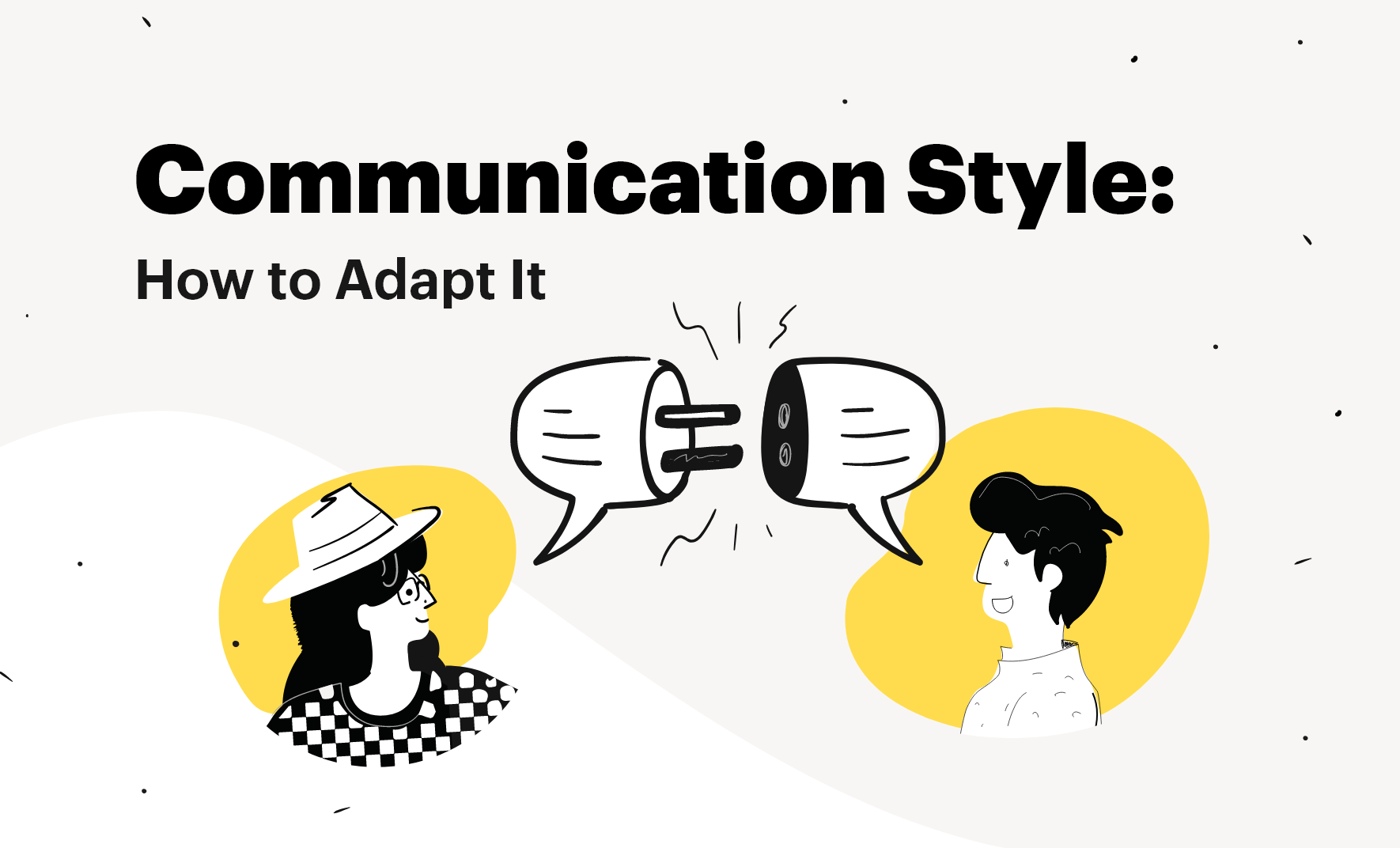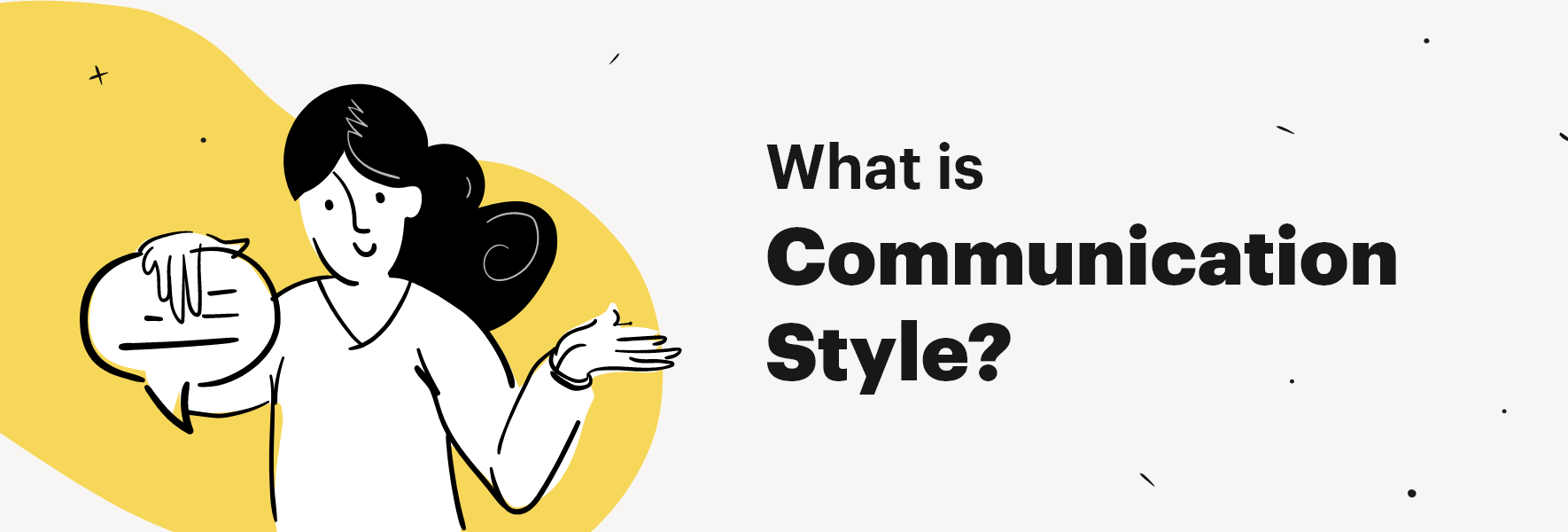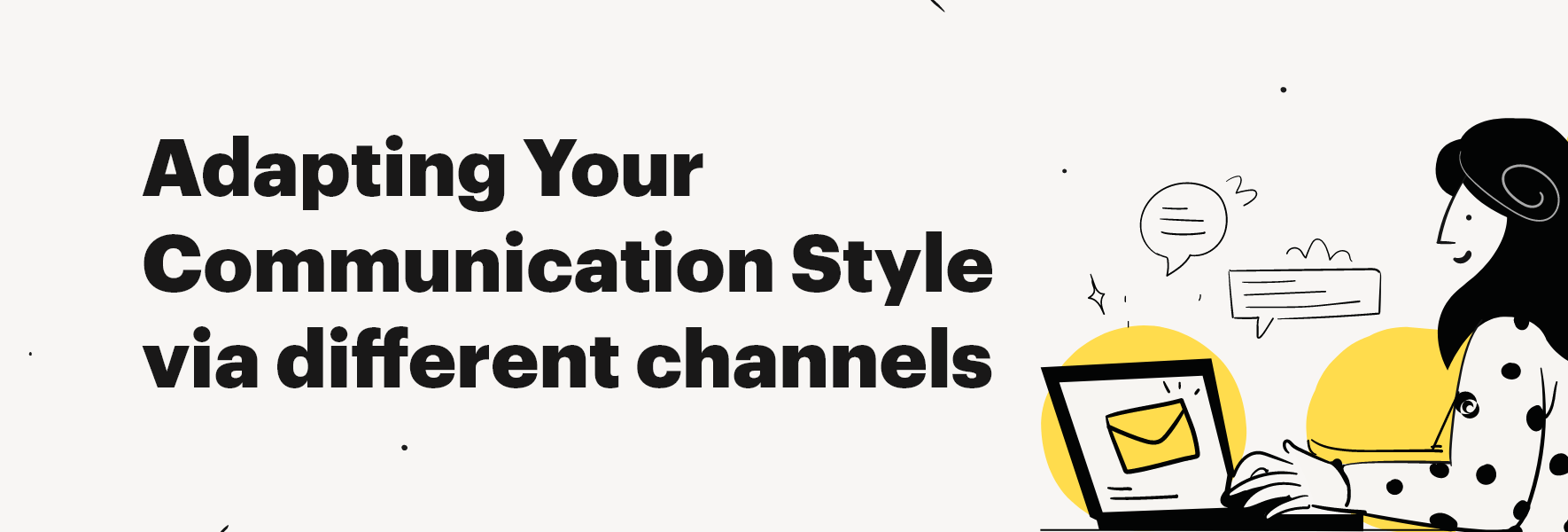Communication Style: How to Adapt It for Every Client

Communication is not just about what information you get across but how you get it across. In order to be at its most successful, it needs to combine the message with the delivery. Does your communication style make the difference between a happy client who comes back for more and recommends your business to family and friends, and an unhappy client? It’s not all it takes for success, however, it’s a huge factor. And you want as many factors to your advantage as possible.
Why Adapt?
The solution seems simple enough, communicate well and it’s going to be fine. Thing is, for communication to work efficiently and coherently, it has to be a two-way street. A toing and froing between you and the client. Yet, clients are different, what works perfectly well for one, may not work that well for another. Like so many things, your communication style has to adapt to the situation in order to achieve the best results, leaving the client feeling valued, informed, and listened to.

What is Communication Style?
Your Communication Style is the way you normally communicate with others in any given situation. You communicate throughout your daily routine, with your colleagues, bosses, employees, and clients. Business Management sets out 4 baseline communication styles which are:
1. Passive Communication Style
Its characteristics include avoidance of expressing opinions and feelings until the tolerance level is reached. On one hand, it can often lead to misunderstanding and even resentment. On the other, it can be safer for passive communicators to speak during conflicts due to the tendency to avoid confrontation.
2. Aggressive Communication Style
An overt communication of feelings and opinions. These communicators speak in a loud tone, maintain eye contact, and tend to dominate through threats, criticism, and blaming. On the bright side, aggressive communicators are leaders who command respect.
3. Passive-Aggressive Communication Style
It’s characterized by a passive appearance but an underlying aggressive streak. These types communicate with body language or lack of openness. The style includes silent treatment. sabotaging, false cooperation.
4. Assertive Communication Style
Widely accepted as the most efficient, this communication style is one of making clear statements of opinions and feelings but with regard and respect for others and others’ views. People with this communication style clearly state their opinions and feelings. They aim for both sides to win in a situation, balancing one’s rights with the rights of others.
Are you able to easily position yourself in a category?
It is likely that you have elements of different categories depending on the situation and depending on who you are communicating with. To find your signature style ask yourself a few questions.
- How do I try to influence others and get my views across?
- How do I manage difficult situations?
- In what way do I change my approach when dealing with different people?
- Am I in tune with the different behavior styles of others?

Adapting Your Communication Style
Adapting your communication style is not about changing it completely. You know who you are and it’s got you this far. Now you have to work on how to make small changes, depending on the situation and the audience in order to get the best results out of the communication. Few people can get away with sticking with one style and relying on others adapting to them.
The most fitting communication style depends on the audience, and the better you know the audience the more information you have to plan your strategy. As far as clients are concerned, you need to try to pick up as much information about them as you can as early as possible, reflect on communication, and refine it each time. The skill is sensing the reactions, working on feedback, and aiming for improvements.
These days not only will you have to adapt your communication to the audience but also the format. Meeting and communication can be face-to-face, written, or video platforms, each presents its own challenge and consideration. But essentially it’s still about establishing a comfortable rapport, and that is about adapting to the client in this situation.
Knowing Your Audience
In business, you have to deal with all sorts. Different relationships with your colleagues, management, departments, suppliers, services, outside agencies, and clients. These groups will all have different focuses on what they need from you, and you from them. However, in all situations, the importance is what is your aim and goal of communication and what is your desired outcome. The best way of achieving this desired outcome is by communicating in the most efficient and effective way. This means adapting to your audience, and the only way you can do that is by knowing or getting to know your audience.
This affects your message and your delivery of that message.
How Much Can You Know?
Here’s where your skill as a manager comes into play. Getting to know your staff and colleagues is vitally important and relatively easy with effort. Clients are a different kettle of fish. The longer you work with a client the better you should get to know them but how can you adapt your style in the early exchanges.
Research – if possible research your client, find out about their business and their position in the business. Find out if any of your colleagues have had dealings with them before, get as much background as you can. Forewarned is forearmed.
Feed Off Them – You need to listen, actively listen especially at first. Their tone and language style, their way of expressing themselves, what their concerns and questions are…all these things and more are keys to opening the doors of communication and keeping them open.
Try to fit them into a loose category – use this as your base but remember to be flexible, people change, relationships developed and you might have read somebody wrongly.

Client Styles
No clients are exactly alike but there are tendencies and theorists always like to categorize so here we go. This knowledge will definitely come in handy when you need to win first-time clients.
1. “Personal” Communication Style
This is the type of client that places a high value on your relationship and the connection they feel with you. They come across as friendly, open, and enthusiastic.
Tips for Personal communication.
- Try to establish a natural conversational tone and rapport.
- Allow them to express themselves and their ideas in their own way.
- Ease of the detail and head for the vision.
2. “Intuitive” Communication Style
The type of results-driven, the goal-centric client who wants to focus on the overall end product rather than the details of getting there. Full of grand ideas, but often difficult to focus on. They can come across as direct, stong-willing, stubborn, and occasionally even rude. These clients are generally very decisive but also easy to disappoint, so be honest with them from the start.
Tips for Intuitive communication
- Present your overall views rather than the detail of achieving them.
- Be clear, to the point, and succinct.
- Answer questions directly.
- Don’t over-promise.
3. “Analytical” Communication Style
They like facts, and more facts. and statistics and data to back up the facts. Analytical clients follow logical processes and are often technologically competent. Their decisions are based on rational, objective choices and not on emotional attachments. These kinds of clients can seem cold and stand-offish but if you get the work they are good to work with as long as you know what you are doing.
Tips for Analytical communication
- Be well prepared.
- Answer queries directly and with evidence.
- Focus solely on business.
- Show your technical knowledge.
4. “Functional” Communication Style
Precise planning, heavy on the detail, well organized, – typical traits of a functional client. These are the clients who are interested in exactly how you will reach their goal, they want to know in detail, they want to know accurately and they will gladly go through it with you. They would rather it take longer but be right than it is rushed. This kind of client tends to be more relaxed once the project has started as long as they are kept informed.
Tips for Functional communication
- Show planning and organization
- Be prompt and responsive to questions
- Be punctual
- Go heavy on the detail

Adapting Your Communication Style via different channels
You may have a preferred communication channel, some prefer face-to-face others mainly written. The question really is not what you prefer but which works best in the situation, and which the client feels most comfortable with. This is the most practical form of adapting your communication. You want the client to feel comfortable in order to get the most information you can. They will feel most comfortable with their preferred method.
Essentially the basic style guides still apply. Stick with the tips but adapt them to take into consideration the channel.
Practical Steps to Adapt
We’ve already looked at the categories that clients fall into, and the general ways in which your content should be organized for certain types. The question remains, How do you achieve this on a Practical level beyond the content?
The words you use matter. They present the tone, formal or informal, professional or chatty, so your words mean much more than just getting the information across. Depending on the type of client you have you need to choose your words carefully. “Personal” client types often appreciate a more chatty style whereas “analytical” types prefer more technical terminology. The secret of success here is to reflect the tone of the client. You have to quickly establish the patterns of speech (it’s easier if you are writing, you have more time to think and plan) and fall into that pattern yourself. People like to communicate with equals, the tone of your language is the quickest and easiest way of equalizing the relationship. You need to find the right level, showing your professional knowledge without confounding, and explaining simply with patronizing.
This is, of course, made more difficult if you are dealing with non-native language speakers. Bear in mind that for non-native speakers the primary goal is to understand and be understood. You may have to disregard formal or informal language and get your clues for tone in another way. In these situations, more technical business terms are often easier to understand than general chit-chat. Avoid slang, colloquialisms, and idiomatic language as much as possible. When face-to-face or video linked you can compensate for more formal language by more non-verbal clues.
1. Active Listening
The best communicators know how to listen actively. This means engaging with what clients say by giving affirmative responses or asking follow-up questions. Show you are paying attention to what they have to say so they will know they’re validated.
2. Mirror
One of the secrets of making people feel comfortable is mirroring, many of us do it without even realizing it. Look around in cafes or bars, and notice how people opposite each other are sitting, look at their gestures – you’ll be shocked by the similarities. Like mirroring tone and vocabulary, mirroring gestures, posture, and body language, unconsciously aids communication by equalizing the relationship.
3. Be Polite
Politeness never goes out of fashion. When reflecting on the tone of the client, remember that you should always remain professional and well-mannered. If a client is angry, be understanding. Show some respect for your relationship. If you are feeling emotional or disrespected – step back, step away, and take the famous deep breath.
4. Plan ahead
Set the scene for the communication as well as you can. If you are using digital platforms, check the tech. If you are having a face-to-face, plan the room, the seating, even the attendees. Plan what you want to say, practice, note your outcomes. If the communication is well, planned you don’t have to worry about the external and you can fully focus on your communication style.
5. Active Reflection
Adaption is about small changes, but small changes will work better if they are consistently working towards the goal of making you a more effective communicator in any situation with any type of client. To get full value, you need to reflect and look back on the successful and less successful communications, you need to target areas of improvement and keep adapting. Your relationships will change over time, you need to change with them.
Conclusion
Everyone is prone to a particular type of communication style, however, this is not a bad thing. It’s important to find your style’s strong sides and learn how to adapt it to different communicators. By developing healthy communication habits such as listening skills, empathy, nonverbal communication, and other effective skills that come with practice, you will be able to set a great communication environment for your team, clients, and ultimately, complete your projects successfully and stress-free.